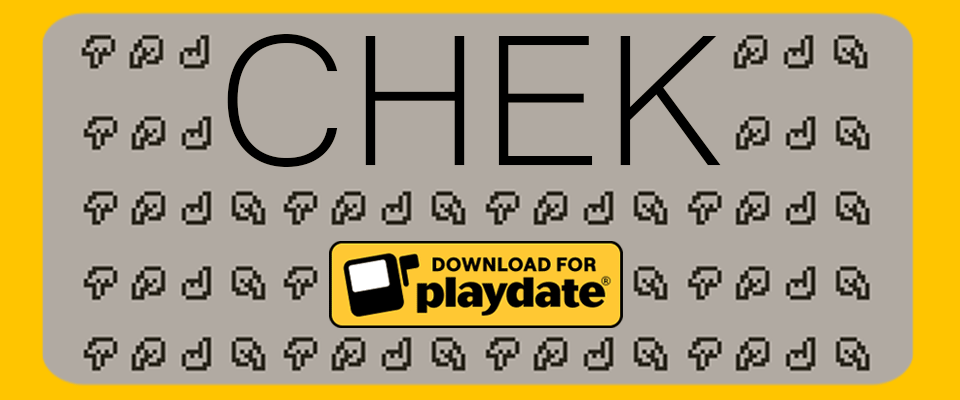Chek is OUT NOW!
The concept just caught in my mind of making a new board game that sat somewhere between Checkers and Chess in terms of strategy, but that could be boiled down to very basic components and could be very accessible to a wide range of players. So through playtesting with friends and the evolution of the agency of the player, I distilled the concept down to the simplest version of the game that we have today. All the pieces on a side are uniform. It uses the widely available 8x8 board format and a standard pair of 6-sided dice. (If you really want to be spartan about it, you could further reduce the dice to a coin flip!)
Chek is, in essence - text on a page - a set of rules - a framework for thinking about strategy and conflict. I did away with rolling dice to determine movement and now players move a single piece in any 4-way direction. They can initiate an attack in any 4-way direction. Positioning is absolutely key. What makes this interesting - at least to me - is the layering of other systems on that structure. These are the Bullies, Chains and Links.
The Bully bonus is easy. if you're attacking an opponent and defenders win ties, they have the advantage. However, if you have one or more of your pieces in an 8-way radius of the opponent, you get a +1 to your attack roll, which gives you the advantage.
Chaining and Linking give depth to your movement strategy. As a result of the Bully system, it is advantageous to surround a piece you're targeting. However, the winner of the attack can Chain attack (which also carries a +1 attack bonus) to any opponent piece surrounding the contested square. This means if the Defender wins, they may be able to attack your other pieces or even opponents that weren't in the original conflict! Linking is even more powerful, as the winner of the initial and subsequent attacks can travel through any 8-way contiguous pieces to attack opponents in other areas of the board.
In practice, this plays out as several rounds of careful positioning followed by a bloodbath of combat, and repeat. As the designer, it's thrilling to witness - but I will admit - I'm actually pretty terrible at the game! I don't have the headspace for deep strategy, but I love making that possibility space for others.
So! I'm extremely interested in your strategies! How does this play out for you? What are some good techniques? What are some good starting boards?
I'm happy to update the game in the future as it evolves, and I can't wait to show you more complex and interesting versions of the game as they're developed!
-----
NOTE: If there's any other designer out there, passionate about board game AI, I'd love to talk about implementing at least a minimax algo for a basic CPU opponent. I've thought on it, but would love some experienced advice or help.
Additionally, this could be played pretty easy on a stream, but I'd also like to develop and asymmetrical password based multiplayer mode. That's pretty pie in the sky, but I think it would be super cool. Would almost certainly need help, so if any of this interests you, contact me on Discord or Twitter!
Get Chek: 2 or 4 Player Playdate Board Game
Chek: 2 or 4 Player Playdate Board Game
Chek is an original 2 or 4 player pass n play board game for the Playdate
| Status | Released |
| Author | Ledbetter Games |
| Genre | Strategy |
| Tags | board, Board Game, checkers, Chess, Local multiplayer, localmultiplayer, Multiplayer, Playdate, Tabletop |
| Languages | English |
More posts
- Bunny Bundle + Update!Mar 24, 2023
- Chek 2-player Game video!Feb 27, 2023

Leave a comment
Log in with itch.io to leave a comment.